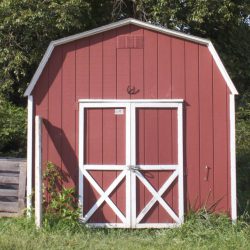We all know the expression ‘getting some fresh air’, but have you ever really stopped to think about what makes the air fresh, and why it is so important for our health?
Breathing in the same stagnant air can create a number of health issues, and a lack of airflow can lead to everything from lingering bad smells to dampness and structural damage to your home. Here we will take a look at airflow, what it means, and how to know if you have sufficient levels of fresh air in your property.
Why is good airflow important?

Good airflow is absolutely essential in your home or workplace for so many reasons relating both to you and your property. Here are a few of the most important ones to get you started:
- Reduce condensation – without proper airflow, night after night condensation will form on your windows, walls, and surfaces and this dampness will continue to build. If left unchecked, it can cause damage to your wallpaper and furnishings, leave a musty, damp smell, and even cause black mould to form which can pose a serious health risk.
- Reduce dust and airborne pollutants – dust particles and other detritus can build up in the air in your home, and this can make it unpleasant and even dangerous to breathe the air after a while. For people with asthma or allergies, proper airflow is essential to circulate out these potentially harmful particles and keep the air fresh.
- Reduce bad smells – without proper airflow and ventilation, everything from everyday bad smells from cooking and suchlike through to the previously mentioned damp and so many others can get trapped and linger in your space.
Good airflow is essential for your house, health and happiness, and should never be taken lightly. Improving your airflow could prevent damage to your home, reduce the impact of allergens and improve your quality of life in myriad ways, so make sure to look at the best airflow systems for your home today.
What are the different types of airflow?

You can classify airflow in many different ways, looking at the laminar versus turbulent behaviour of the waves, where it flows in a uniform manner or is more irregular, but when it comes to your home the main types of airflow are organic and man-made.
Organic airflow is what occurs naturally, when you open a window, a breeze blows in, and forces the air inside to circulate and be replaced. Historically, most houses had a degree of organic airflow because they weren’t sealed. Air could get in through the gaps around windows, under doors, and through a million tiny cracks and crevices to create a good flow.
Today, with a premium being set on energy conservation and keeping heating bills down, most houses are being built without these gaps that let air in and out. While there are many benefits to such a design, the huge downside is that it prevents fresh organic airflow, which means that you have to make sure an alternative solution is in place.
Above we have looked at why good airflow is so important, and in your new sealed home you will soon see the impact of dampness, mould and bad smells if you don’t provide the right levels of ventilation.
Manufacturing good airflow through the proper ventilation system will negate all the downsides of sealed houses, and give you all the benefits of perfect airflow including a reduction in particles like pollen that may cause allergies, or even more harmful pollutants in the air.
By using ventilation you are intentionally diluting and replacing the air inside your building with fresh and clean air from the outside, which can help to control temperature, pollution, humidity and so much more.
You have far greater control over your airflow using mechanical ventilation than if you leave it up to natural or organic systems that may or may not be effective in your home. If you want guaranteed fresh air and all of the benefits that come with it, getting a proper ventilation system is definitely the best way to go.
How is air flow measured?

There are a number of ways that you can measure airflow, including a few do-it-yourself methods that can be fairly inaccurate, but still, give you some idea. If you are looking for the best way to get a spot on reading, you may want to get yourself an anemometer.
An anemometer measures airflow in cubic feet per minute (CFM). You can set it to measure airflow, hold it in front of the fan, duct or area where you are trying to see how much air is coming in and let it get to work.
You can hold a specific reading, see the high and low points of airflow during the time you have been measuring it, and get a pretty well-rounded view of how much air is coming in at that point. It does only measure for as long as you are holding it, so if you are unsure that air is coming in all the time you may have to repeat the checks at different times throughout the day and night.
If you don’t have an anemometer and don’t want to buy one, you can always give a more creative solution a go. Get a cardboard box that is big enough to fit over your duct or fan, cut a hole slightly smaller than a credit card, and tape said card along one side so that it can swing open like a door.
Now you can measure the swing of the card to see how your ventilation or airflow is working. Roughly speaking, a swing of 1.5 inches equals 25CFM, 2.5 is 48CFM and so on. A reasonable airflow should be between 40 and 60CFM.
Conclusion
Good airflow is so important for your health, for the safety and structure of your home, and for your quality of life. Most homes now cannot afford to simply let natural airflow try and be enough, proper ventilation is essential to know that your airflow is at the right strength and standard.
You can measure your current airflow yourself, and if you are unsure how to go about it, or unhappy with the results, get a quote from a top ventilation company and give yourself the gift of fresh air and peace of mind today.

















